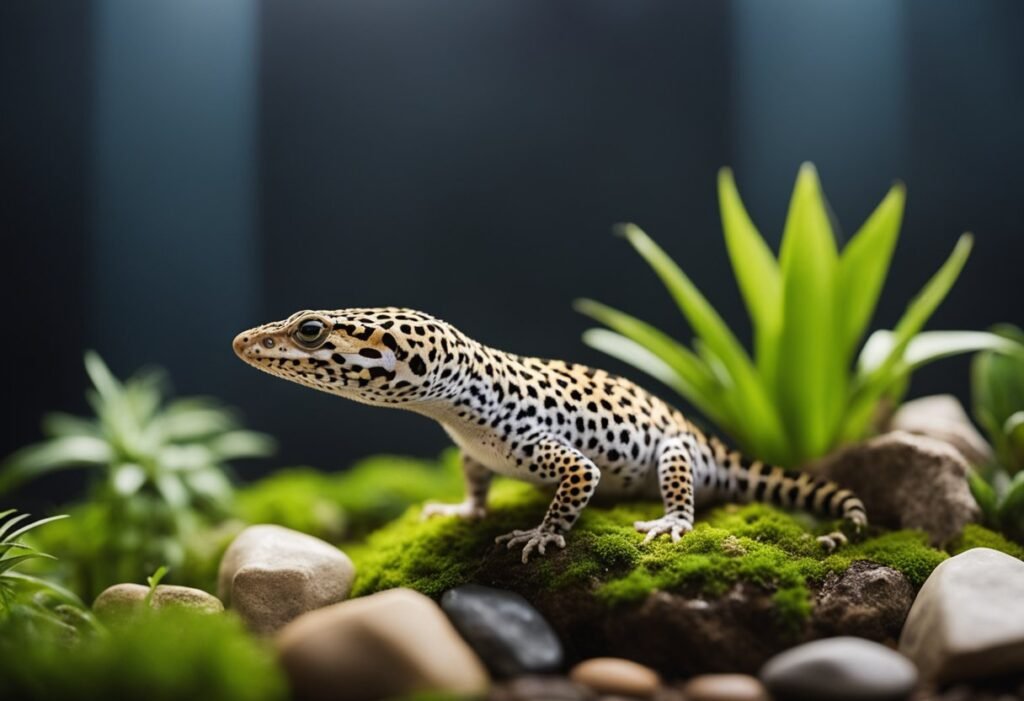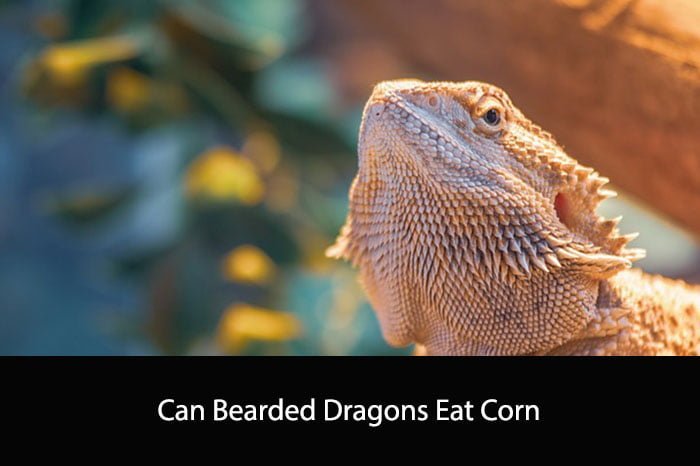Leopard geckos are a popular pet choice among reptile enthusiasts. They are relatively easy to care for, have unique personalities, and come in a variety of colors and patterns. As with any pet, it’s important to understand their dietary needs to ensure their health and well-being. One question that often arises is whether leopard geckos can eat other little leopard geckos.

The short answer is no, leopard geckos should not be fed other leopard geckos. While they are known to be cannibalistic in the wild, it’s not a behavior that should be encouraged in captivity. Feeding leopard geckos a diet of live insects, such as crickets and mealworms, is the best way to ensure they receive the proper nutrition they need.
It’s important to note that leopard geckos have different dietary needs at different stages of their life. Hatchlings and juveniles require a higher protein diet than adult leopard geckos. It’s recommended to feed them small insects, such as pinhead crickets and fruit flies, multiple times a day. Adult leopard geckos can be fed larger insects, such as adult crickets and mealworms, every other day. Providing a balanced diet and avoiding feeding them other leopard geckos will help ensure their health and longevity.
Leopard Gecko Cannibalism

Leopard geckos are known to be relatively easy to care for and are a popular choice for reptile enthusiasts. However, one aspect of their behavior that is not commonly discussed is cannibalism. In this section, we will explore the causes of cannibalism and its prevalence among leopard geckos.
Causes of Cannibalism
Cannibalism in leopard geckos can be caused by a variety of factors. One of the most common causes is overcrowding. When there are too many geckos in a small space, they may start to view each other as competition for resources, including food and shelter. This can lead to aggressive behavior and ultimately, cannibalism.
Another cause of cannibalism is stress. Leopard geckos that are stressed due to factors such as poor husbandry, illness, or environmental changes may become more aggressive and territorial. This can lead to them attacking and eating other geckos in their enclosure.
Prevalence Among Leopard Geckos
While cannibalism is not a common behavior among leopard geckos, it has been observed in both wild and captive populations. In the wild, cannibalism is more likely to occur when resources are scarce and competition is high. In captivity, cannibalism is more likely to occur when geckos are housed in crowded or stressful conditions.
It is important for leopard gecko owners to be aware of the potential for cannibalism and take steps to prevent it from occurring. Providing adequate space, hiding places, and food for each gecko can help reduce stress and prevent aggressive behavior. Additionally, monitoring geckos for signs of aggression and separating them if necessary can help prevent cannibalism from occurring.
Dietary Needs of Leopard Geckos

As responsible pet owners, we must ensure that our leopard geckos receive a balanced diet to maintain their overall health and well-being. Leopard geckos are insectivores, which means that their diet consists mainly of insects. In this section, we will discuss the proper nutrition and inappropriate food items for leopard geckos.
Proper Nutrition
Leopard geckos require a diet that is high in protein and low in fat. Feeding them a variety of insects such as crickets, mealworms, and waxworms can provide the necessary nutrients. It is important to gut-load the insects before feeding them to the leopard gecko. Gut-loading involves feeding the insects a nutritious diet before feeding them to the leopard gecko. This ensures that the leopard gecko receives the necessary nutrients from the insects.
In addition to insects, leopard geckos also require calcium and vitamin D3 to maintain healthy bones. Calcium can be provided through dusting the insects with calcium powder before feeding them to the leopard gecko. Vitamin D3 is necessary for the absorption of calcium and can be provided through exposure to UVB light.
Inappropriate Food Items
Leopard geckos should not be fed other leopard geckos or any other type of animal. This can lead to the transmission of diseases and parasites. Additionally, feeding leopard geckos live prey that is too large can cause impaction, which is a blockage in the digestive system.
It is also important to avoid feeding leopard geckos insects that are too large. Insects that are too large can cause choking or injury to the leopard gecko. As a general rule, the insects should not be larger than the space between the leopard gecko’s eyes.
In conclusion, providing a balanced diet that is high in protein and low in fat, gut-loading the insects, and providing calcium and vitamin D3 are essential for the health of leopard geckos. It is important to avoid feeding them inappropriate food items and to ensure that the insects are an appropriate size.
Housing and Environment

Territorial Behavior
Leopard geckos are solitary animals and can be quite territorial towards their own species. As a result, it is not recommended to house multiple leopard geckos together, especially if they are different sizes or sexes. In the wild, they would only come together to mate and then go their separate ways.
If you do decide to house multiple leopard geckos together, it is important to provide enough space and hiding places to reduce stress and aggression. However, even with ample space and hiding places, there is still a risk of fighting and injury.
Optimal Habitat Setup
To ensure the health and well-being of your leopard gecko, it is important to provide an optimal habitat setup. This includes a tank or enclosure that is large enough for your gecko to move around in, with appropriate heating and lighting.
The tank should have a substrate that is safe and easy to clean, such as reptile carpet or paper towels. Avoid using sand or loose substrate, as this can cause impaction if ingested.
Provide hiding places and climbing opportunities for your gecko, such as rocks, logs, and plants. This will allow them to feel secure and exhibit natural behaviors.
Overall, it is important to provide a safe and suitable environment for your leopard gecko to thrive in. Avoid housing multiple leopard geckos together and ensure that their habitat setup is optimal for their needs.
Health and Safety
Risks of Cannibalism
Leopard geckos are known to be cannibalistic, especially when they are housed together and their enclosure lacks space and hiding places. Cannibalism can lead to serious injuries or even death of the weaker gecko. Cannibalistic behavior is often triggered by stress, hunger, or territorial disputes.
It’s important to note that cannibalism is not a natural behavior for leopard geckos. In the wild, they typically feed on insects and small prey, not on their own kind. Therefore, it’s important to provide a suitable environment for your geckos to prevent cannibalistic behavior.
Preventing Aggressive Behavior
To prevent aggressive behavior and cannibalism, we recommend the following:
- Provide enough space: Each leopard gecko should have at least 10 gallons of space in their enclosure. If you are housing multiple geckos, make sure the enclosure is large enough to accommodate them comfortably.
- Provide hiding places: Leopard geckos are nocturnal and need places to hide during the day. Hiding places also help reduce stress and territorial disputes.
- Feed them well: Make sure your geckos are well-fed and have access to enough food. Hunger can trigger aggressive behavior and cannibalism.
- Separate aggressive geckos: If you notice that one of your geckos is being aggressive towards others, separate it immediately. You can house it in a separate enclosure or provide a divider in the existing enclosure.
By providing a suitable environment and taking the necessary precautions, we can prevent cannibalistic behavior and ensure the health and safety of our leopard geckos.
Breeding Practices
When it comes to breeding leopard geckos, it is important to follow safe and responsible practices. This not only ensures the health and well-being of the geckos, but also helps to prevent any potential harm or injury.
Managing Hatchlings
Once leopard gecko hatchlings emerge from their eggs, it is important to provide them with proper care and attention. This includes providing a suitable habitat, such as a small enclosure with a heat source and appropriate substrate. It is also important to ensure that the hatchlings are receiving proper nutrition, such as small insects like crickets or mealworms.
In addition, it is important to monitor the hatchlings closely to ensure that they are not exhibiting any signs of illness or injury. This may include checking for any abnormalities in their behavior or appearance, such as lethargy, lack of appetite, or visible injuries.
Safe Breeding Protocols
When breeding leopard geckos, it is important to follow safe and ethical protocols to prevent any harm or injury. This may include selecting appropriate breeding pairs based on their health and genetic history, as well as providing a suitable environment for mating.
It is also important to monitor the breeding process closely to ensure that both geckos are exhibiting healthy and natural behaviors. This may include observing their mating behaviors and ensuring that there is no aggressive or harmful behavior taking place.
Overall, by following safe breeding practices and managing hatchlings properly, we can help to ensure the health and well-being of leopard geckos and promote responsible breeding practices.
Frequently Asked Questions
Is cannibalism observed among leopard geckos?
Yes, cannibalism can occur among leopard geckos. This is more commonly observed in captivity, where geckos are housed together in small enclosures with limited space and resources. Cannibalism is more likely to occur when there is a size difference between the geckos, or when there is a shortage of food.
What are the risks of housing baby leopard geckos with adults?
Housing baby leopard geckos with adults can be risky, as adults may view the babies as prey and attack them. Additionally, baby geckos may not be able to compete for food and resources with larger adults, which can lead to malnourishment and stunted growth.
Can leopard geckos exhibit aggressive behavior towards each other?
Yes, leopard geckos can exhibit aggressive behavior towards each other, especially when housed together in small enclosures. Aggression can be triggered by competition for food, space, or mates.
What should be done if a leopard gecko bites another?
If a leopard gecko bites another, it is important to separate them immediately to prevent further injury. The injured gecko should be monitored closely for signs of infection or other complications.
How does the diet of baby leopard geckos differ from adults?
Baby leopard geckos require a diet that is higher in protein and fat than adult geckos. They should be fed a diet of appropriately sized insects, such as crickets or mealworms, dusted with calcium and vitamin supplements.
What are the signs of predatory behavior in leopard geckos?
Signs of predatory behavior in leopard geckos include stalking, pouncing, and biting. Geckos may also exhibit aggressive posturing, such as puffing up their bodies or waving their tails. It is important to monitor geckos closely when housed together to ensure that predatory behavior does not escalate into cannibalism.





